Intro
Calculate your babys due date easily with our guide, using pregnancy calculators, conception dates, and gestation periods to estimate your babys arrival, ensuring a healthy pregnancy and prepared parenthood.
Calculating a baby's due date is an exciting and important milestone for expectant parents. The due date, also known as the estimated date of delivery (EDD), is typically estimated to be around 40 weeks from the start of the last menstrual period (LMP). However, this can vary from woman to woman and even from pregnancy to pregnancy. In this article, we will delve into the world of due date calculation, exploring the various methods, their accuracy, and what factors can influence the actual date of birth.
The importance of calculating a baby's due date cannot be overstated. It allows parents to prepare for the arrival of their little one, making necessary arrangements for their home, work, and personal lives. Healthcare providers also use the due date to monitor the pregnancy's progress, ensuring that both the mother and the baby receive the best possible care. With the due date in mind, parents can plan for prenatal care, childbirth education, and even the baby's nursery, making the transition to parenthood smoother and less daunting.
Understanding how to calculate a baby's due date is relatively straightforward, yet it can be a complex process. The most common method is based on the first day of the last menstrual period (LMP). This method assumes that ovulation occurs on day 14 of a 28-day menstrual cycle, and that the fertilized egg implants in the uterus about 6-10 days after ovulation. While this method provides a good estimate, it's essential to remember that every woman's body is different, and various factors can influence the accuracy of the due date calculation.
Methods for Calculating Baby Due Date
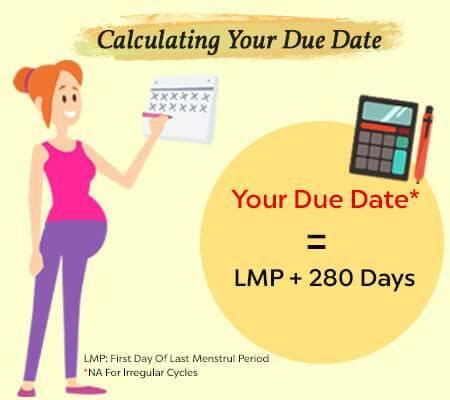
There are several methods for calculating a baby's due date, each with its own level of accuracy. The most common methods include:
- Last Menstrual Period (LMP) Method: This method is based on the first day of the last menstrual period and assumes a regular 28-day menstrual cycle.
- Ultrasound Method: This method uses ultrasound technology to measure the size of the embryo or fetus and estimate the gestational age.
- Conception Method: This method is based on the date of conception, which can be estimated using ovulation predictor kits or fertility apps.
- Physical Examination Method: This method involves a physical examination by a healthcare provider to estimate the gestational age based on the size and development of the uterus.
How to Calculate Baby Due Date Using LMP Method
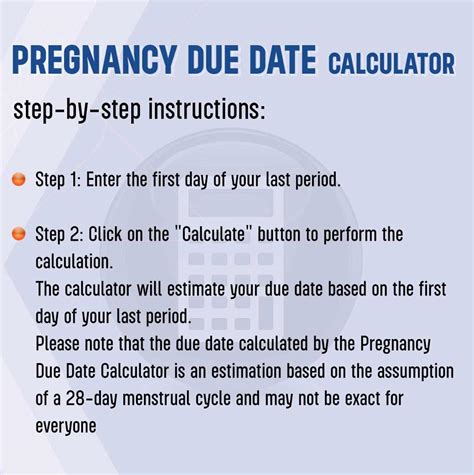
To calculate a baby's due date using the LMP method, follow these steps:
- Determine the first day of the last menstrual period (LMP).
- Add 7 days to the LMP.
- Subtract 3 months from the result.
- Add 1 year to the result.
For example, if the LMP is January 1, 2022, the due date would be:
- January 1 + 7 days = January 8
- January 8 - 3 months = October 8
- October 8 + 1 year = October 8, 2022
Factors That Can Influence Due Date Accuracy
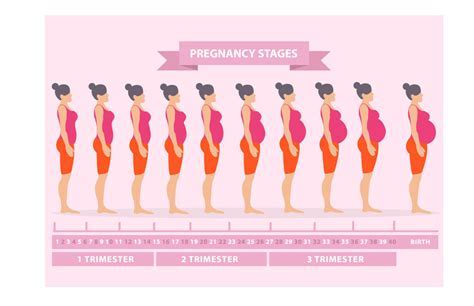
While the LMP method provides a good estimate, several factors can influence the accuracy of the due date calculation. These include:
- Irregular Menstrual Cycles: Women with irregular menstrual cycles may have a harder time determining their due date.
- Multiple Pregnancies: Women carrying twins or other multiples may have a different due date than those carrying a single baby.
- Previous Pregnancies: Women who have had previous pregnancies may have a different due date than first-time mothers.
- Medical Conditions: Certain medical conditions, such as diabetes or high blood pressure, can affect the due date.
Importance of Ultrasound in Due Date Calculation

Ultrasound technology plays a crucial role in due date calculation, especially in the first trimester. By measuring the size of the embryo or fetus, healthcare providers can estimate the gestational age and confirm the due date. Ultrasound can also detect any potential complications or abnormalities, allowing for early intervention and treatment.
Benefits of Accurate Due Date Calculation
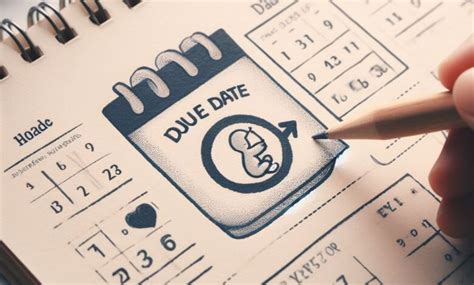
Accurate due date calculation has several benefits, including:
- Improved Prenatal Care: Knowing the due date allows healthcare providers to monitor the pregnancy's progress and provide personalized care.
- Reduced Risk of Complications: Accurate due date calculation can help identify potential complications early on, reducing the risk of premature birth or other issues.
- Better Birth Planning: With a confirmed due date, parents can plan for the birth, making necessary arrangements for their home, work, and personal lives.
Common Mistakes in Due Date Calculation
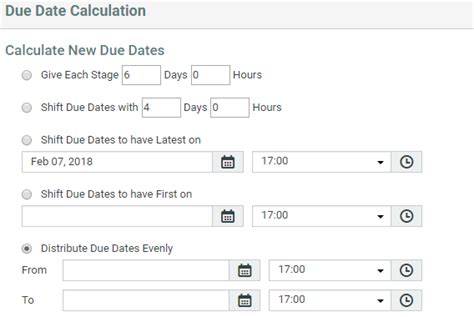
When calculating a baby's due date, it's essential to avoid common mistakes, such as:
- Assuming a Regular Menstrual Cycle: Women with irregular menstrual cycles may need to use alternative methods to estimate their due date.
- Not Accounting for Multiple Pregnancies: Women carrying twins or other multiples may need to adjust their due date calculation accordingly.
- Not Considering Medical Conditions: Certain medical conditions can affect the due date, and healthcare providers should take these into account when calculating the due date.
Due Date Calculation Tools and Resources
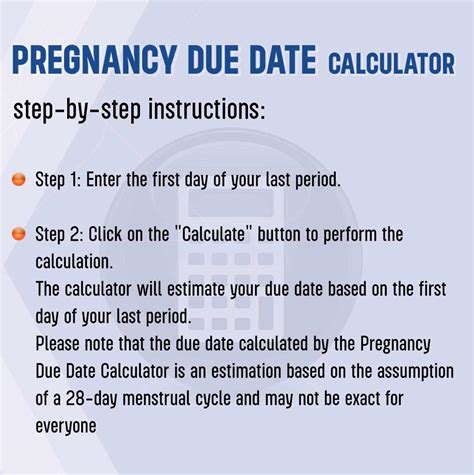
There are several tools and resources available to help calculate a baby's due date, including:
- Online Due Date Calculators: Websites and apps that use the LMP method or other algorithms to estimate the due date.
- Pregnancy Wheels: Physical or digital wheels that help estimate the due date based on the LMP.
- Ultrasound Technology: Healthcare providers use ultrasound technology to measure the size of the embryo or fetus and estimate the gestational age.
Conclusion and Next Steps

In conclusion, calculating a baby's due date is an important aspect of pregnancy care. By understanding the various methods, their accuracy, and the factors that can influence the due date, parents can better prepare for the arrival of their little one. If you're an expectant parent, be sure to consult with your healthcare provider to determine your due date and develop a personalized birth plan.
We invite you to share your thoughts and experiences with due date calculation in the comments below. Have you used any of the methods mentioned in this article? What were your results? Share your story and help other expectant parents navigate the world of due date calculation.
What is the most accurate method for calculating a baby's due date?
+The most accurate method for calculating a baby's due date is the ultrasound method, which uses ultrasound technology to measure the size of the embryo or fetus and estimate the gestational age.
Can I use an online due date calculator to estimate my due date?
+Yes, online due date calculators can provide an estimate of your due date based on the LMP method or other algorithms. However, it's essential to consult with your healthcare provider to confirm your due date and develop a personalized birth plan.
What factors can influence the accuracy of my due date calculation?
+Several factors can influence the accuracy of your due date calculation, including irregular menstrual cycles, multiple pregnancies, previous pregnancies, and medical conditions. Be sure to discuss these factors with your healthcare provider to ensure an accurate due date calculation.
